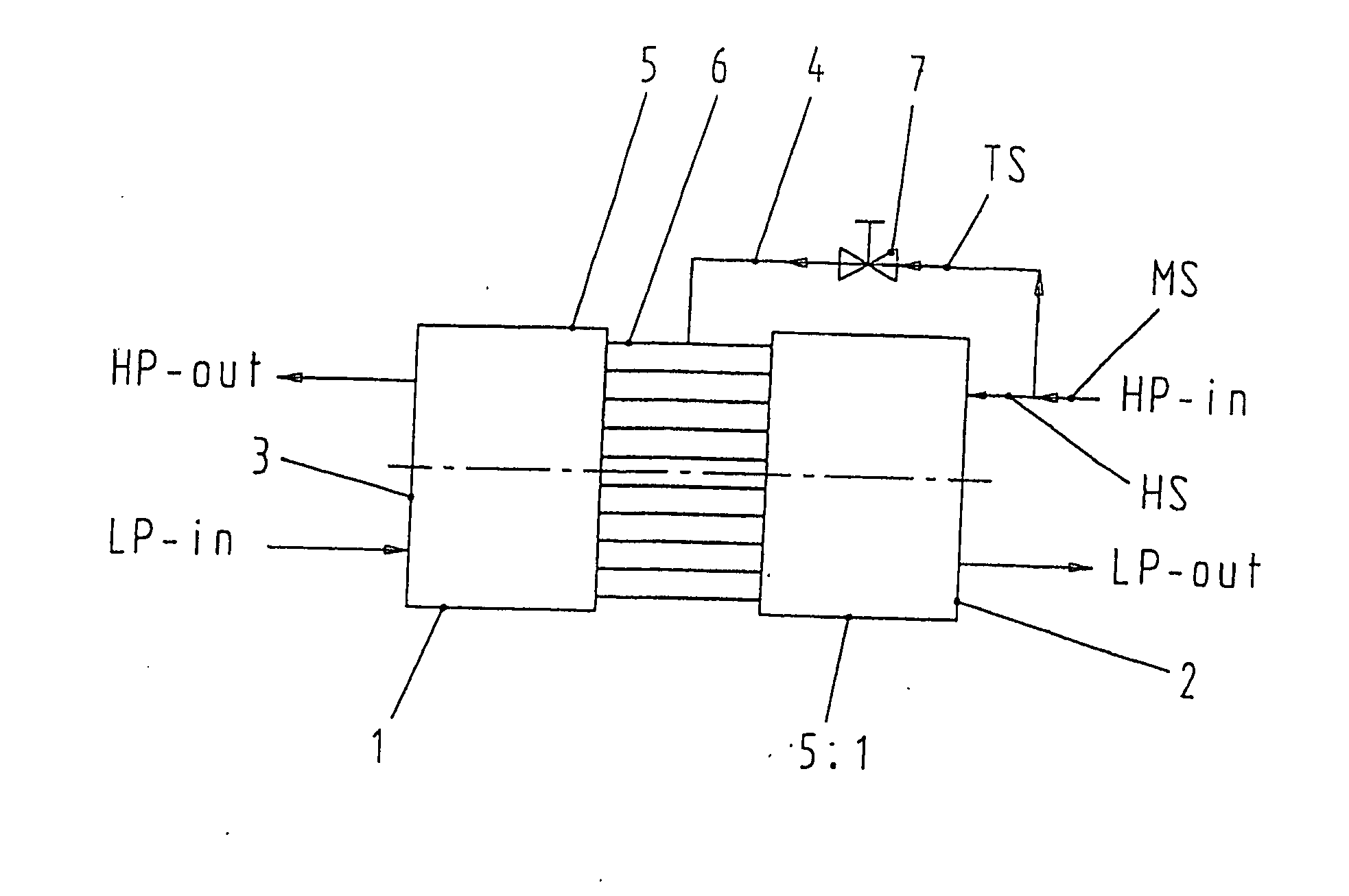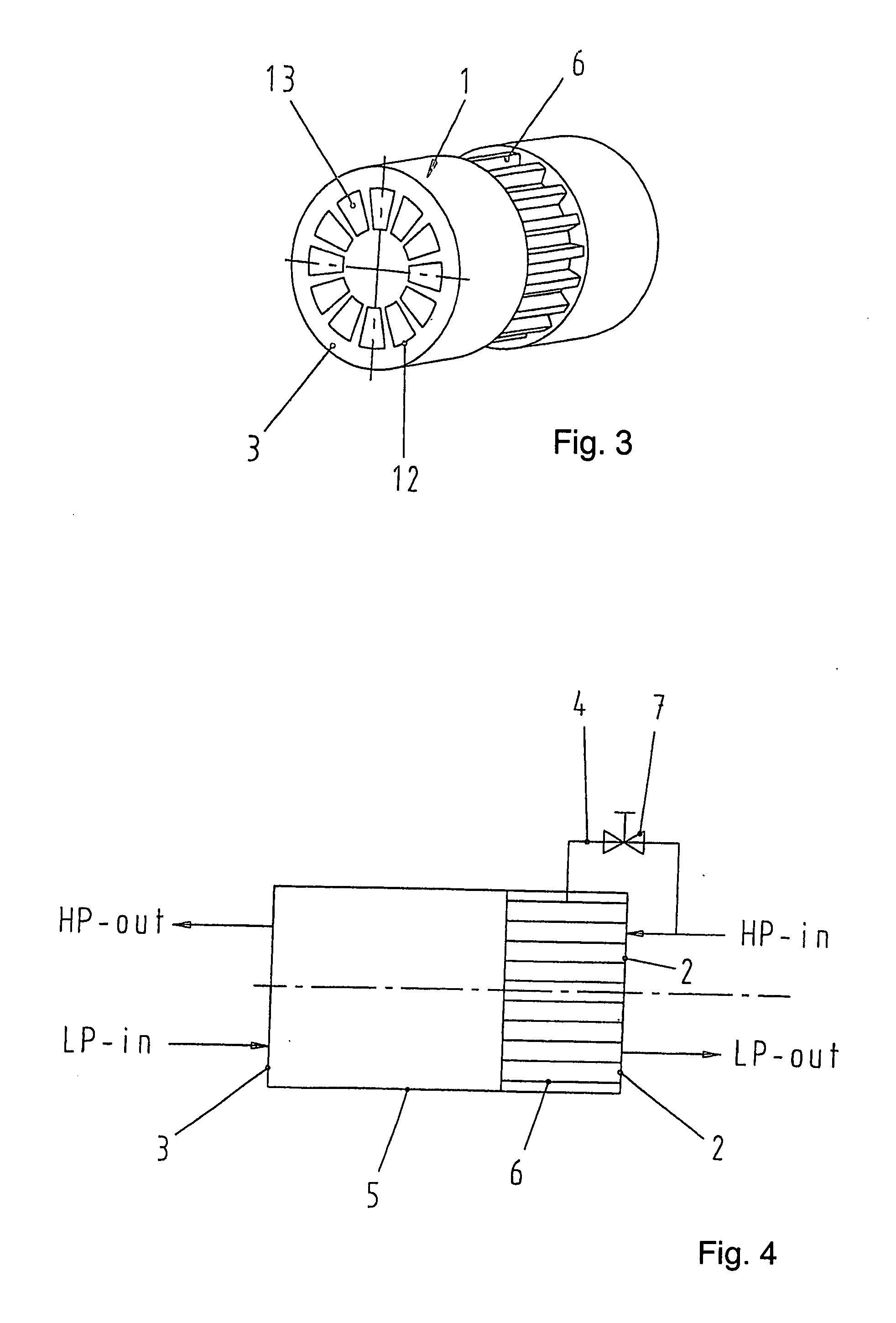Speed-regulated pressure exchanger
a technology of pressure exchanger and speed regulation, which is applied in the direction of machine/engine, hot gas positive displacement engine plant, pump components, etc., can solve the problems of complex method of setting rotor, automatic setting of rotational speed at an undefined, arrangement, sealing and design of separation elements and respective seating faces, etc., to achieve minimal mixing losses, large operating range, and efficient operation state
- Summary
- Abstract
- Description
- Claims
- Application Information
AI Technical Summary
Benefits of technology
Problems solved by technology
Method used
Image
Examples
Embodiment Construction
[0033]FIG. 1 shows a cylindrical rotor 1 of a pressure exchanger. It is shown in a view from above with the axis of rotation line in the plane of the drawing and, for reasons of simplicity, the other housing parts which surround the rotor and in which the flow guides are arranged have been omitted. The arrows represent the directions of flow and the various liquids which are in operative connection with the rotor. On a rotor end face 2, the arrow HP-in indicates the direction of flow of a first liquid having a high pressure that is to be transferred to a second liquid LP-in flowing into the rotor 1 on the other rotor end face 3. After the transfer of pressure from HP-in to LP-in, which takes place in the pressure exchanger due to the rotation of rotor 1, a liquid whose pressure has been increased flows out of the pressure exchanger as HP-out on the rotor end face 3 and flows back to a plant. On the rotor end face 2, which is on the right here, an arrow LP-out pointing away from the ...
PUM
 Login to View More
Login to View More Abstract
Description
Claims
Application Information
 Login to View More
Login to View More - R&D
- Intellectual Property
- Life Sciences
- Materials
- Tech Scout
- Unparalleled Data Quality
- Higher Quality Content
- 60% Fewer Hallucinations
Browse by: Latest US Patents, China's latest patents, Technical Efficacy Thesaurus, Application Domain, Technology Topic, Popular Technical Reports.
© 2025 PatSnap. All rights reserved.Legal|Privacy policy|Modern Slavery Act Transparency Statement|Sitemap|About US| Contact US: help@patsnap.com



